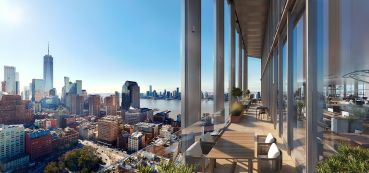Parks and Wreck: The Fight for Pier 40 and the Myth of Public Parks
When Sandy swept into the town almost two months ago, Hudson River Park—as its name might suggest—was among the places inundated by the swelling sea under more than a dozen feet of water.
The surge washed over the historic piers and brand-new lawns, filling skate parks, swamping ball fields, submerging mini golf holes and surrounding the merry-go-round. Yet much of the park, in the traditional sense, came through fine.”I think we lost only five trees and a few plants,” Madelyn Wils, president and CEO of the Hudson River Park Trust, said at a post-Sandy conference last Thursday.
It was the more manmade features, the development that undergirds the park and pays for its upkeep, that struggled to weather the storm.“The buildings, however, did not fare quite as well,” Ms. Wils explains. “We’re still without power, because we are on our own grid, and we’ve had to work on our own to restore that.”
This is only the latest, and in some ways the least, of the troubles on the waterfront, where a bitter disagreement between Ms. Wils and the park’s biggest backer, developer Douglas Durst, reveals cracks in the public-private model by which the city’s parks are so often built and maintained these days. These partnerships are both sustainer and straightjacket, leading to the creation of more parks in a generation, but also limited means to keep them up and running. Call them libertarian parks.
Read More


